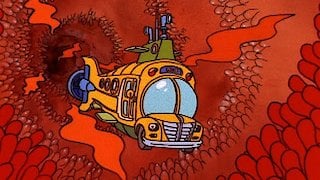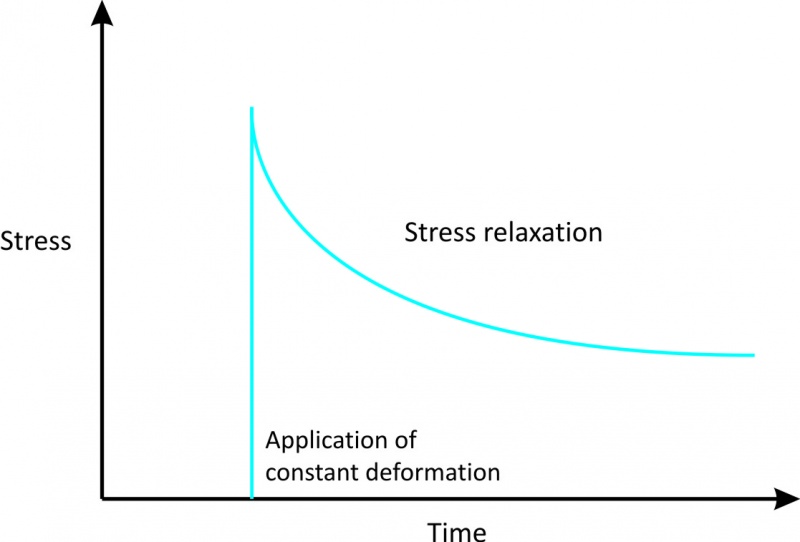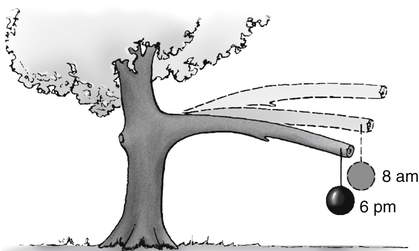Almost every sport I played as a youth athlete started the same; get to the field, find your team, run around and attempt to hit each other as much as possible before coach blows the whistle. Coach blows the whistle, circle up, captains to the middle, count out the stretches. Reflecting back, I now realize that these stretches were not a waste of time. They taught us to follow order and leadership, to count really loudly as group, and to give time for the coaches to have a quick reset from their day job to transition into their coaching roles. I now know the benefits of groups working together on similar tasks, the advantage to taking a pause for a mindset adjustment in the moment, and that physiologically, stretching itself is probably doing very little for us.
Don't get me wrong, flexibility itself as the ability to freely move through range of motion is important for all sports. The easy example is gymnastics, where the athlete is frequently going through end-range movements while creating and absorbing high levels of energy. Another example is throwing a baseball or softball; in order to throw the ball efficiently, the athlete needs to be able to move freely through the cocking and release phases of throwing. The argument is that while flexibility is needed, static stretching may not be the gatekeeper to improving this attribute.
Before getting into the physiology and case for retiring static flexibility training, it's important to note that if it helps you to get your mind ready for the activity at hand, gives you a moment to pause, or is being used as a cool down to bring a group back together then use it! At the same time, we should pose the question, "Can the above be accomplished using techniques that are more beneficial than stretching?" Additionally we might as well address "Should we be stretching after an injury occurs?"
Brief History (see image above)
Flexibility can be defined as the intrinsic properties of a tissue and the subjective toleration to absolute range of motion in a joint or series of joints. It was thought to be an essential component in fitness for years and flexibility tests made their way into nationwide fitness examinations from popular opinion and expert recommendation. However, flexibility has not been correlated to human performance or longevity. This questions the utility of "stretching," sparking more research to be conducted on the topic. Technology has recently allowed researchers to document the effects of stretching vs. strengthening on the muscle tendon unit and performance. We will briefly hop on the bus with Ms. Frizzle again and review the biomechanics of flexibility below.

Active vs. Passive Tension
Tension or tightness we feel in muscles originate from both active and passive tension throughout musculotendinous and connective tissue structures. The curve below demonstrates force-length relationships, the mechanical property related to stretching.
Let's first discuss the passive length-tension curve. In shorter range of motions the tissue may be on "slack" and there is little tension. As you begin to lengthen the tissue more tension is created. If the tissue continues to be lengthened the passive tension will increase exponentially. For example, if you're stretching your hamstrings by reaching towards your toes, the closer you get to the toes the more passive tension is created.
Passive muscle tension is dependent on structural properties of the muscle and surrounding fascia, while active tension is provided by dynamic muscle contraction (Page 2012). The ability of a muscle to produce force depends partly on the instantaneous arrangement of the fibers and their ability to create a cross-bridges. For a detailed description of this process, see Squire 2016. The active tension curve demonstrates an inverted U shape with three distinct phases; ascending, plateau, and descending.
Due to the arrangement of our muscle fibers, we create the greatest amount of force in mid ranges due to increased cross-bridge formation of our fibers. In end ranges of motion, our fibers may overlap or be positioned out of range, resulting in difficulty for cross-bridge formation. For example, when performing a bicep curl, the greatest amount of force will be produced when the elbow is bent at 90 degrees. Another factor in active tension is the neuroreflexive property of the tissue. Part of the brain's role is to protect and it gets a lot of information from its buddies, the muscle spindles and golgi tendon organs. If the brain perceives danger it may send messages to inhibit further range of motions.
The total length-tension curve is the combination of both passive and active tension. Force moving freely through a range of motion in the human body is measured in a rotational manner, which is known as torque. Therefore, in reference to the human body, length-tension curves are known as torque/angle curves.
Stress, Strain, and Plastic Deformation Curve
The stress-strain curve shows us that as load is increased, length will increase through distinct regions. The slope of this line is defined as stiffness. Stiffness is defined as an object's ability to resist deformation in response to an applied load and is rate-dependent; the faster we stretch at a given load, the higher the stiffness. This may happen to help protect us from tissue injury. As it happens, the basis for many arguments is a result of misinterpreting definitions. When we say we feel "stiff" or that stretching makes us feel "less stiff," by definition this is not true but we understand the context (I say it too).
Stretching will shift the stress-strain curve to the right but the slope will remain the same assuming constant velocity. Our stiffness is therefore the same, but our ability to move through greater ranges has improved (we'll get to why later on). One theory suggests that once the tissue is in the plastic region (see above), the effects would be permanent. In practice, this would mean stretching into the plastic region would result in permanent changes once the stretch was released. Evidence has not supported this theory. Why? Viscoelasticity plays a role.
As flexibility relates to the absolute range of motion in a series of joints, we need to consider the properties of bone, cartilage, tendons, ligaments, and muscles. These tissues are high in collagen and water. Approximately two-thirds of a ligament's composition is water bound in the formed and unformed matrix² This means the solid structures of our musculoskeletal system helps create properties of elasticity; they resume their original length once tensile force is removed. Think of a rubber band. You pull it apart, shoot it across the room, and when you go to pick it up it has returned back to its original shape. Due to the water content of our musculoskeletal system we also have viscosity, the measurement of a material's resistance to deformation at a given rate.
Put these together and viscoelasticity is the property for when stress on a material is dependent on the rate of loading and its ability to return back to its original state once the load has been removed. If a stretch is held for a period of time, the muscle's resistance to the stretch will decline. This is called viscoelastic stress relaxation and is demonstrated in the picture below. Once the load is removed the structure will likely return back to its original state due to elasticity. During the unloading process, energy will likely be lost (hystersis). Previous research has shown that the biomechanical effects of viscoelastic deformation can be quite minimal and so short-lived that it may have no influence on subsequent stretches. For example, a static stretch of the hamstrings for 45 seconds in duration was found to have no significant effect on the next stretch performed 30 seconds later.⁴
Creep
Another property to consider during static stretching is creep. This is not referring to person in the corner of the gym watching you as you're stretching. Creep is the mechanical property of length that gradually increases in response to a constant stretching force. Biologically, this occurs due to water content being slowly squeezed out. Eventually, this will reach a maximum as no more water will leave the structure. For example, when you are sleeping the discs in your spine absorb water and as you are upright against gravity throughout the day water is slowly forced out of the disc. Therefore, if you measure your height when you first wake up compared to before going to bed, there will be a difference. This property is age dependent and peaks between the ages of 20-30 (sorry, Mom).
Neuroreflexive Theory
As stated earlier, a contribution to active tension is the neuroreflexive property of muscle called the "stretch reflex". Generally, the idea is that a person may be limited in range of motion during a static stretch due to involuntary reflexive muscle contraction of the stretching muscle or the opposing muscle group. Numerous techniques have been developed to "combat" this including contract-relax, hold-relax, and other proprioceptive neuromuscular facilitation (PNF) techniques. In order to test these techniques, changes in electromyographic (EMG) activity is utilized. If a neuroreflexive mechanism is causing involuntary contraction that prevents range of motion, then the level of contraction via EMG should change through the range of motion or be changed after using a PNF technique.
However, studies have shown that when individuals perform a passive stretch with constant, slow velocity into end range positions, there are no significant changes in EMG in the stretched muscle. Furthermore, studies using high velocity stretching also show no significant difference in the activity of the stretch reflex. Lastly, studies in both one session short-term contract relax stretching and (3 and 6 weeks’ duration) static stretching showed no significant difference with EMG activity of the stretched muscles and no shift of passive torque/angle curves was observed. Therefore, the conclusion was that changes in range of motion could not be attributed to changes in the stretch reflex.
Quick Summary:
With all of that said, we do see some short term change lasting up to 60-90 minutes with static stretching. When you stretch, the passive length-tension curve will shift to the right, stiffness (the slope of this curve) will remain the same, and you will move into greater ranges of motion. However, the current review of the literature shows that it does not seem to be a result from decreased neuroreflexive or viscoeleastic properties and that the result is short-lived.
Soooo... you stretch and move more freely... how does this happen?
We will cover this in Part 2: Why does stretching causes changes in ROM? Does strengthening do the same? Stretch vs strength after injury.
Thank you for your flexibility.
Stay Strong, Stay Curious, Stay Connected. Stay flexible?
Dr. Dillon Caswell, PT, DPT
References:
- Mine and Dr. Jason Tuori's, PT, DPT, CSCS thoughts
- Weppler CH, Magnusson SP. Increasing muscle extensibility: a matter of increasing length or modifying sensation?. Phys Ther. 2010;90(3):438-49.
- Lozano PF, Scholze M, Babian C, et al. Water-content related alterations in macro and micro scale tendon biomechanics. Sci Rep. 2019;9(1):7887.
- Page P. Current concepts in muscle stretching for exercise and rehabilitation. Int J Sports Phys Ther. 2012;7(1):109-19.
- Reid DA, Mcnair PJ. Passive force, angle, and stiffness changes after stretching of hamstring muscles. Med Sci Sports Exerc. 2004;36(11):1944-8.
- Magnusson SP. Passive properties of human skeletal muscle during stretch maneuvers. A review. Scand J Med Sci Sports. 1998;8(2):65-77.
- Magnusson SP, Aagard P, Simonsen E, Bojsen-møller F. A biomechanical evaluation of cyclic and static stretch in human skeletal muscle. Int J Sports Med. 1998;19(5):310-6.
- Squire JM. Muscle contraction: Sliding filament history, sarcomere dynamics and the two Huxleys. Glob Cardiol Sci Pract. 2016;2016(2):e201611.
- Magnusson SP, Simonsen EB, Aagaard P, Dyhre-poulsen P, Mchugh MP, Kjaer M. Mechanical and physical responses to stretching with and without preisometric contraction in human skeletal muscle. Arch Phys Med Rehabil. 1996;77(4):373-8.
- Kistemaker DA, Van soest AJ, Wong JD, Kurtzer I, Gribble PL. Control of position and movement is simplified by combined muscle spindle and Golgi tendon organ feedback. J Neurophysiol. 2013;109(4):1126-39.
- O'Sullivan K, , The effects of eccentric training on lower limb flexibility: a systematic review British Journal of Sports Medicine
- Nuzzo JL. The Case for Retiring Flexibility as a Major Component of Physical Fitness. Sports Med. 2020;50(5):853-870.
- Lauersen JB, Bertelsen DM, Andersen LB. The effectiveness of exercise interventions to prevent sports injuries: a systematic review and meta-analysis of randomised controlled trials. Br J Sports Med. 2014;48(11):871-7.





No comments:
Post a Comment